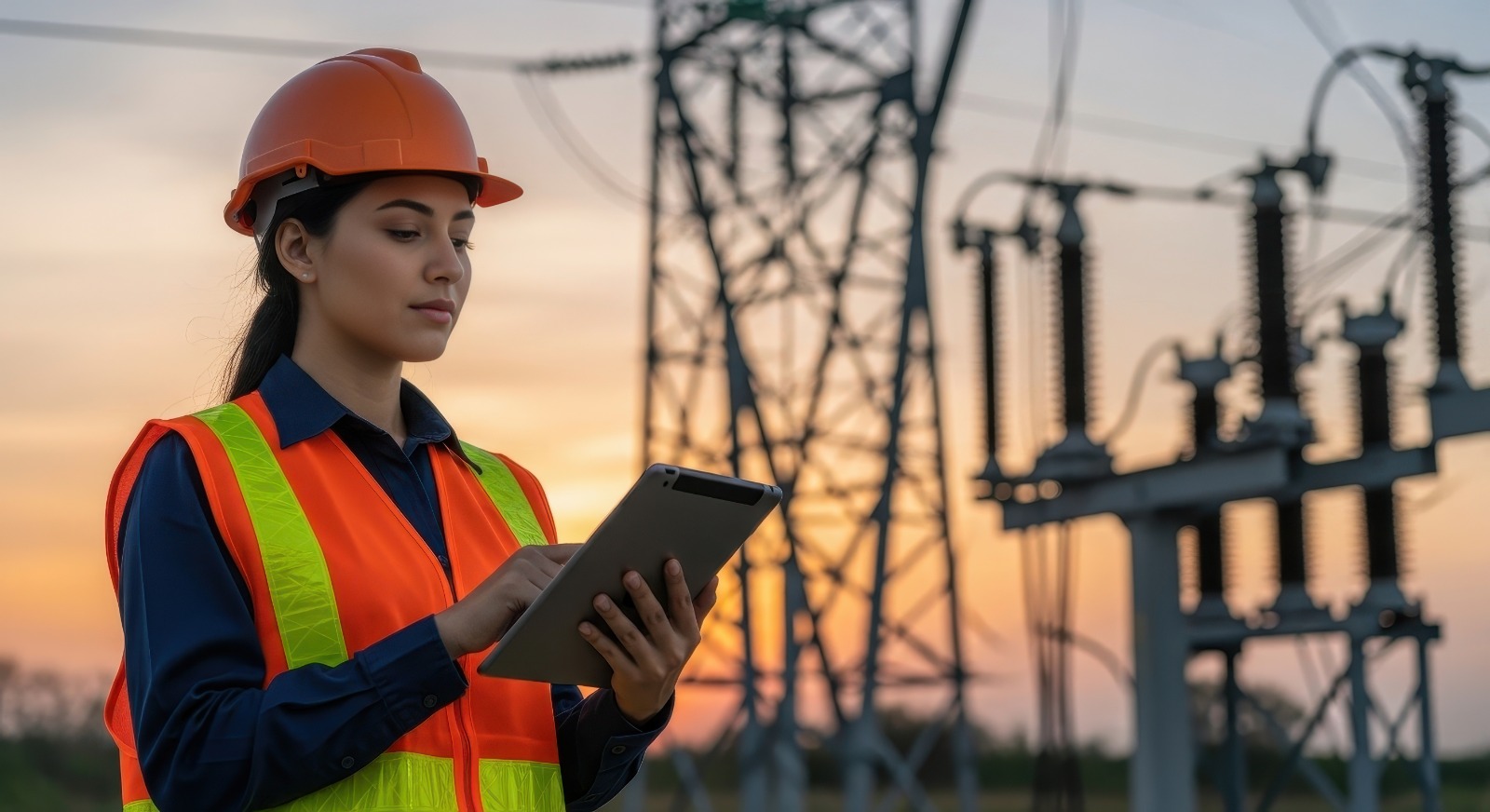
With the Hurricane Season beginning in two days, there is a real concern whether the critical infrastructure across the United States and the Territories of Puerto Rico and U.S. Virgin Islands is stable enough. Resilience against infrastructure failure is essential for ensuring the health and safety of communities during and following major natural disasters.
Hurricanes, Wildfires, Ice Storms, Flooding, Heat Waves and other extreme weather are growing in frequency, cost and intensity. Combined with the nation’s aging electrical infrastructure, extreme weather is causing frequent damage to our electrical system, costing Americans and the economy tens of billions of dollars each year and impacting the quality of life. Since 1980, the U.S. has experienced 403 climate and weather disasters where overall damages/costs reached or exceeded $1 billion. The total cost of these 403 events exceeds $2.915 trillion.
While for many, power outages are a nuisance and economically disruptive, they have the potential to become life-threatening in a matter of hours for certain vulnerable populations. Loss of electricity puts health care facilities at risk and can knock out essential equipment. Refrigeration, heat and cooling come to mind first. But it also halts potable water pumping equipment, stalls sewage treatment plants, which can force the release of raw sewage into waterways. The economic losses that critical infrastructure has been experiencing over the past several years are climbing. Most of the costs associated with restoration are uninsurable damage. As each year passes there are increases in the severity and frequency of extreme weather and climate-related events resulting in a huge negative economic impact across the nation and territories of the United States.
Mega-storms are here to stay. Every storm is different, but one thing is sure; there is a likelihood of increasing frequency and intensity of severe storms in the face of climate change The 4th National Climate Assessment states “Without substantial and sustained global mitigation and regional adaptation efforts, climate change is expected to cause growing losses to American infrastructure and property and impede the rate of economic growth over this century”. It follows stating that the billion-dollar storm problem will not be going away any time soon.
Utilities are critical to any recovery of communities after an event. Unless utilities become more resilient to extreme weather events, they put themselves at unnecessary risk, in both physical and financial terms. Repairing storm damage and upgrading infrastructure after the fact is expensive and catastrophic.
Power systems outages pose one of the largest economic impacts to local communities. Outages have major impacts to the critical infrastructure that keeps communities operating and sustains life, including local governments, financial institutions, medical and health institutions, individual life support systems, educational institutions, food and water supply, retail business, jobs, and emergency services.
Many utility companies are spending billions of dollars to harden the power grid, and the costs keep climbing. It is not just grid hardening that costs a lot; the restoration after an outage or storm event to get the grid back up and operate are costly as well. This is having major economic impacts on utilities’ budgets whether an Investor-Owned Utility, Public Owned Utility or a Cooperative Utility.
There are three types of energy utilities in the United States and Territories. There are over 2,000 communities in the United State that own their not-for-profit electric utilities, also known as Public Owned Utilities (POUs), run by local governments. Additionally, there are 812 Cooperatives Utilities and 168 Investor-Owned Utilities (IOUs) operating in the U.S. The largest utilities by category are:
- IOUs: Pacific Gas and Electric, Southern California Edison Company and Florida Power and Light (FP&L) a subsidiary of NextEra Energy, Inc. which is publicly traded company listed on the New York Stock Exchange (NYSE: NEE).
- POUs: Puerto Rico Electric Power Authority (PREPA) and the Los Angeles Department of Water and Power
- CO-OPS: Pedernales Electric Co-op in Johnson City, Texas, and Jackson Electric Member Co-op in Jefferson, Georgia
Public power utilities are community-owned, not-for-profit electric utilities that safely provide reliable electricity to more than 49 million Americans in over 2,000 communities across the U.S., large cities like Austin, Nashville, Los Angeles, and Seattle, small towns and the Navajo Nation, get electricity from a public power utility.
Public Owned Utilities are one of three primary types of services that have easier time in receiving assistance from the federal government after a disaster. They are distinguished by a few key traits that help them receive federal dollars from disaster relief funding programs. Key traits are:
- Locally Controlled
Like public schools and libraries, public power utilities are owned by the community and run as a division of local government. These utilities are governed by a local city council or an elected or appointed board. Community citizens have a direct voice in utility decisions, including the rates the utility charges and its sources of electricity. - Affordable
Public power utilities are not-for-profit entities that provide electricity to customers at the lowest rates. Homes powered by public power utilities pay 13 percent less than homes powered by private utilities. Businesses that get electricity from public power utilities also pay less than businesses that get electricity from private utilities. - Reliable
Customers of public power utilities lose power less often. Customers of a public power utility are likely to be without power for just 74 minutes a year, compared to customers of private utilities, who lose power for an average of 136 minutes a year — provided there are no major adverse events. - Invested in the Community
Public power utilities are embedded into the fabric of their communities and support a range of community programs including charitable, educational, and beautification programs. Public power employs 93,000 people in hometown jobs. On average, public power utilities pay 5.6 percent of electric operating revenues back to the community — through taxes, fees, and special services. Public power gives 33 percent more back to the community than private utilities.Public power infrastructure projects are often funded through the issue of tax-exempt municipal bonds. Funding through municipal bonds means community members invest in their electricity infrastructure — such as new generation equipment, transmission lines, and distribution system upgrades — and receive interest as public power utilities pay back the loan. - Environmentally Responsible
Public power generates 10 percent of all electricity in the U.S. and distributes — or sells at the retail level — 15 percent of all power flowing to homes and businesses. Public power utilities care for the environment while they buy or generate electricity from diverse sources including natural gas, coal, and nuclear, as well as renewable energy sources such as solar, water, and wind. In several regions, public power utilities can buy wholesale hydropower generated from federal dams at cost and pass the savings on to customers.Public power facilities reduced the carbon footprint by 33% from 2005 to 2017, outpacing the emissions reductions seen across all electric generation in the U.S. In 2017, more than 40% of the power generated by public power came from non-carbon emitting sources.
Common issues and struggles
Regardless of type, all electric utilities have the same issues, concerns and struggles with finding funding to restore and strengthen the utility grid after a disaster. In some cases, disasters have pushed some utility providers into bankruptcy. That alone has major economic impacts on a community. It’s not just the loss of power that creates the hardships and catastrophic impacts to the community, it’s the subsequent loss of critical infrastructure for communities to sustain themselves such as financial institutions, medical institutions, and educational institutions, and communications. The range of disasters from flooding, hurricanes, tornadoes, earthquakes, wildfires, cyber-attacks and significant losses didn’t affect just one person, family, community or business, the impact of these events is felt by everyone. We need to change the way we think and create a true culture of preparedness. Investing in mitigation activities before the next event or disaster is the key to building a more resilient nation.
The public, private, and non-profit sectors annually spend billions of dollars to fund mitigation planning and activities that avoid, reduce, or transfer these natural hazard risks. Studies have shown that such mitigation investments can be effective and cost efficient. It has been documented by FEMA Hazard Mitigation Experts and National Institute of Building Sciences Report, that for every $1 spent on mitigation strategies there is a $6 reduction in future events/disaster. The costs and dangers posed by natural hazards, along with the importance of mitigation, should drive the United States towards a more coordinated, integrated approach to mitigation investments. As a result, mitigation investments made by the federal government, state, local, territorial and tribal entities (SLTTs), as well as by private and non-profit sector entities (such as businesses, philanthropies, foundations, universities, and other non-governmental organizations), would be more effective and efficient.
As these extreme weather events take place, it puts a strain on the utilities budgets and slows the recovery process down and limits the capabilities of rebuilding with resiliency or hardening of the infrastructure. With most utilities relying on federal funding to help with restoration and hardening of the system it becomes a issue with the cost to restore. This is because the federal funding programs are a reimbursement program and you must spend the money, properly document everything and reconcile the costs to submit for reimbursement from the funding source. Most utilities do not have the resources to fund the recovery or staffing to properly document these costs.
We at Alternative Recovery Consulting, (ARC), with our “Blue Ocean Strategy” approach, our utility and critical infrastructure experts understand these complexities and struggles by applying our revolutionary change into the recovery program. Our focus, in the wake of a major natural disaster, is to immediately help in the recovery process of an eligible recipient or sub-recipient large or small utilities, municipal owned, cooperatives, tribal, or even investors owned to have the capabilities to recover immediately.
ARC’s innovative approach to immediate funding through Regulated Funding Firms and proprietary Task Order Management enables for a swift and rapid emergency response minimizing disruption. With proper procurement policies our focus is to begin permanent resilient work so the rebuilding can begin as well.
ARC’s Blue Ocean Strategy approach is a design-build through Regulated Funding Firms to completion One-Stop-Service concierge firm. We exercise project oversight, thoroughly document the event, prepare all reimbursement packages and submits to funding sources for reimbursement, our collateral. As a community driven team our experts can help rebuild a community after a major natural disaster to a successful conclusion within the timelines required by the Robert T Stafford Act.
Don’t wait until it’s too late. Contact us at +1 (800) 481-3607 or (407) 967-1950.
Martin “Marty” Altman, PMP, President ArcNews@alternativerecoveryconsulting.com
More about the Author

Mr. Altman is President and Founder of Alternative Recovery Consulting, LLC (ARC) a certified Project Management Professional (PMP), past FEMA Public Assistance Infrastructure Branch Director with over 45 years of leadership experience and has managed and implemented disaster planning and recovery program management for public and private sector clients. Having worked on over 70 major disasters across the United States, Puerto Rico, and the US Virgin Islands. states working with federal, state, and local governments. Mr. Altman has in-depth expertise in all phases of disaster management: planning, preparedness, hazard mitigation, wildfire management, response and recovery programs, post-disaster redevelopment planning, audit compliance, process improvement, quality assurance, business development, resiliency planning, CDBG Disaster Recovery, Fire Management Assistance Grant Program (FMAG), and the National Flood Insurance Program.
As a visionary to drive and implement change for improving response and recovery operations, so that communities can improve the health and safety of their citizens. Martin has developed ARC’s Blue Ocean Strategy to expedite recovery operations along with co-author Hernando Cruz, AIC
